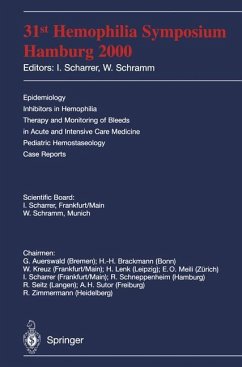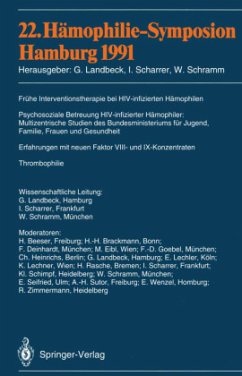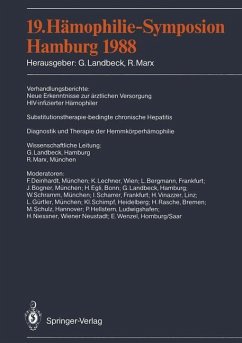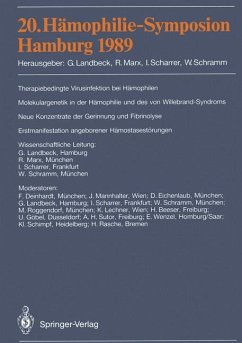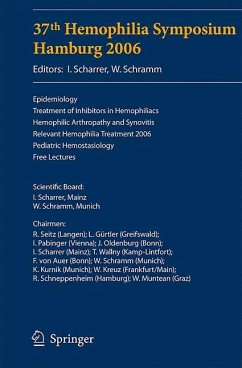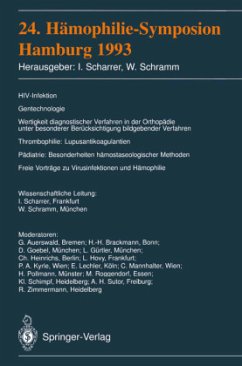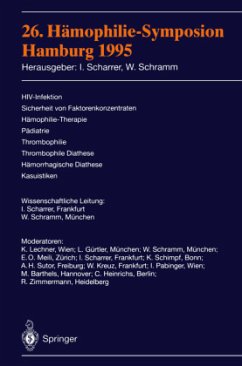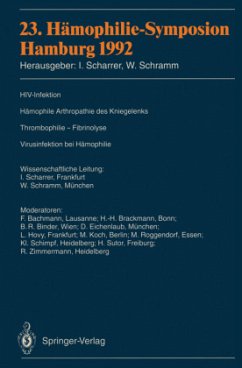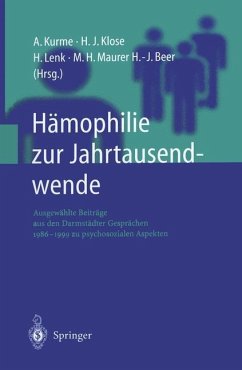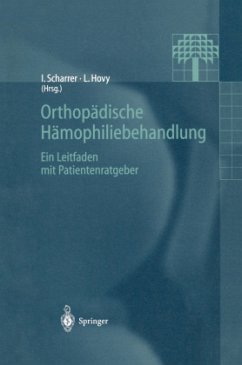
32nd Hemophilia Symposium Hamburg 2001

PAYBACK Punkte
20 °P sammeln!
Seven months following LTX quality of live has increased markedly in the hereby presented patient. A prolonged life expectance can be anticipated due to improved liver function and decreased bleedingtendency as a result of elevated leukocyte and thrombocyte counts. A positive surprise is the patients comment of less joint pain in spite of unchanged hemophilic arthropathy. If this is also true for other haemo philia patients following LTX this may develop as a new objective towards gene therapy as well. From a clinical perspective bleeding risk ismarkedlyreduced due to nearlynor mal factor VIII...
Seven months following LTX quality of live has increased markedly in the hereby presented patient. A prolonged life expectance can be anticipated due to improved liver function and decreased bleedingtendency as a result of elevated leukocyte and thrombocyte counts. A positive surprise is the patients comment of less joint pain in spite of unchanged hemophilic arthropathy. If this is also true for other haemo philia patients following LTX this may develop as a new objective towards gene therapy as well. From a clinical perspective bleeding risk ismarkedlyreduced due to nearlynor mal factor VIII and thrombocyte levels as well as a presumable reduction of blood pressure in esophageal varacies. CD4-Helper cells increased significantly after LTX. However,at the same time a decrease of CD4/CD8 ratio was measured. CD4 count alone may therefore not be appropriate for HIV staging or subsequent decision whether or not immunfunction is sufficient for later LTX. Due to a CD4 count of above 700following livertransplantations the risk of opportunistic infections islow at this time. According to these preliminary results LTX should be considered in a subgroup of haemophilia patients with advanced liver cirrhosis in spite of HIV infection. Dysfibrinogenemia following after Snake Bite M. KRAUSE, J. BOJUNGA, D. MEBS, and I. SCHARRER Introduction A 35 year old snake breeder was bitten on the left foot by a middle American pit viper Crotalus durissus dryinas which had escaped.





